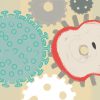I’m a high school math teacher. My school district transitioned to remote learning this past week, and we won’t return to campus until at least the end of April. While the transition has been jarring, it’s also been a rich opportunity to improve my practice as a teacher and reflect on the role I play as a public educator.
Before closure, COVID-19 was already making its mark in the school building. Students and teachers, like the rest of the world, could talk about little else. Science classes were exploring epidemiology. Our nurse was spreading the good word about handwashing. I taught classes on exponential growth and curve flattening.
We wanted these lessons to arm our students with knowledge in the face of fear, but the fear and confusion were palpable. Many students asked if we thought school was going to close down. They wondered how long we thought the spread would last.
One visibly distraught ninth grader raised her hand in algebra and said, “So many people are saying different things. Some people are saying this is not a big deal. Some people are saying it is. Who am I supposed to believe?” We discussed what makes a source credible and how citizens can make informed judgments. In truth, I’m not sure if this clarified things for her.
Those teaching moments, while inseparable from the coronavirus, were not unfamiliar and very much situated in the context of a typical school day. The outside world always informs the work we do.
But now that we are remote, we find ourselves in a moment of existential reckoning for public education. As teachers, we are being forced to ask ourselves: what, why and how do we teach?
Read the remainder of Jacob Goldstone’s essay in the March 25, 2020 issue of Bangor Daily News. Goldstone, an MS in Educational Studies student, is a math teacher at Brunswick High School.

